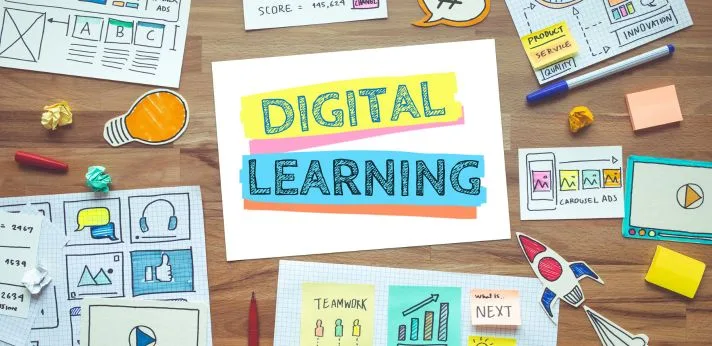One of the things that the modern age has ushered in is online education. The centuries-old
method of sitting in classrooms and listening to a teacher in real life has been assigned to a
realm of obsoletion. A computer table is the new classroom desk. A keyboard is a new pencil and eraser. A text editor is a notebook, and a screen is a teacher.

For some people, this prospect is dangerous and daunting, signifying the insidious reliance of humans on technology. For others, this prospect is promising, signifying yet another way technological solutions can streamline everyday tasks. In reality, it’s a bit of both. It’s daunting, but at the same time, it’s promising. There are pros and cons to online education. Understanding those pros and cons can help us realize the right way to utilize it to get the benefits while avoiding the downsides.
Pros of online education
There are several pros of online education.
Ease of access
First of all, learning in an online digital environment is better in terms of accessibility. For
traditional learning, there has to be a specific venue and a specific time where/when the
lecture or class is conducted. It is only accessible to people who are either based in that
area or who are willing (and have the means) to go to that area, etc.
Subscribe Us to get Latest Updates from India's Top Universities.
This makes education less accessible. There could be people who may genuinely want
to learn from a class but are unable to because they cannot attend the venue due to
distance/travelling, etc.
In online education, this problem does not exist. As long as someone is eligible to attend a
class, and if they have a device/internet connection, they can do it.
Saving time and money
Similarly, another benefit that can advocate for online education is how it
can help save time and money. When someone has to attend a class at a specific venue or
location, they have to spend the time and money to get there. This doesn’t apply to all
situations, of course, but for people who have to take some sort of transportation to their
institute, etc., it counts.
When education is available digitally, there is no such time or expense involved. You can
use the online portal or platform, etc., and access the class from where you are.
Interactive and enjoyable learning
Another benefit of digital learning is that it is easy to incorporate enjoyable and interactive learning exercises. There are many ways in which students can be taught their lessons using interactive methods that make them more enjoyable and interesting.
To give you an idea, we will give some examples here:
- One example of interactive learning exercises is using platforms like Kahoot! and PearDeck. On these platforms, there are various types of activities that teachers can do with their students. Teachers can have their students draw things on the virtual board/canvas or do MCQs digitally on the screen, etc.
- Similarly, there are many things that teachers can effectively teach their students by using pre-made online quizzes. For example, if you head over to Britannica (the website), you can find different sorts of quizzes on topics like world history, science, and so on. They are fun to do, and they usually have some engaging visual elements that make them not so boring to look at.
- Online tools are also included in these “interactive” activities that educators can do when teaching digitally. By online tools, we refer to software such as grammar checkers, paraphrasing tools, and whatnot. These tools can be used to help students understand things like grammar rules and also to improve their writing skills. However, to be used in this type of educational capacity, these tools have to be high-quality and AI-driven. If a grammar checker has to be used, for example, it should be something phenomenal like GrammarCheck. Likewise, if a paraphrase has to be used, it needs to be something awesome like Paraphrase-Online.com.
Cons of online education
Now that we’ve looked at the upsides of digital learning let’s face the bitter truth about the downsides as well.
Distractions and focus
In a traditional learning environment, it is very easy for students to focus on the class. Since the whole environment is conducive to learning and teaching, there aren’t many distractions that can hamper students from understanding the material and retaining it.
On the other hand, when we talk about digital learning, it typically involves the students using their mobile phones or computers to tune into the class and listen to the professor, etc. Even if it is not lectures or classes, the learners still have to use a device to access the
material.
Since the inherent medium of digital learning is the internet and electronic devices etc., many possible distractions can bother learners. They can have trouble focusing and this can ultimately hurt their performance.
Less teacher-student evaluation
In traditional learning, there is a lot of interaction between teachers and students. The teachers can judge each student and then tailor their approach accordingly. For example, if a teacher discerns a particular student’s weaker understanding ability, they can simplify and exemplify their explanations. This sort of stuff happens in school classrooms quite regularly.
In digital learning, there is no such interaction that allows the teacher to understand each student deeply. There are questions and responses, sure, but they don’t convey half as effectively the ability of the student as a traditional one-on-one interaction would.
Lack of discipline
This is yet another downside of digital learning.
In an actual classroom, teachers can discipline their students to get them to study better. The following discipline is helpful for the students, too, since they learn to be civil and mannered.
On the other hand, in a digital learning environment, there isn’t much the teacher can do
to discipline their students. A lot of times, there is no direct interaction between the two parties.
Conclusion
The right way to leverage online learning is to address the cons and downsides to minimize them. For example, when it comes to distractions and focus, the solution to this problem is for the learners to use features and software to limit their usage access on their respective devices. Nowadays, there are many such features – such as focus modes and parental controls, etc. – that can be used for this purpose.
In the same way, to maintain discipline in digital education, teachers can set strict time periods for their classes and be stringent in matters of attendance, etc.
